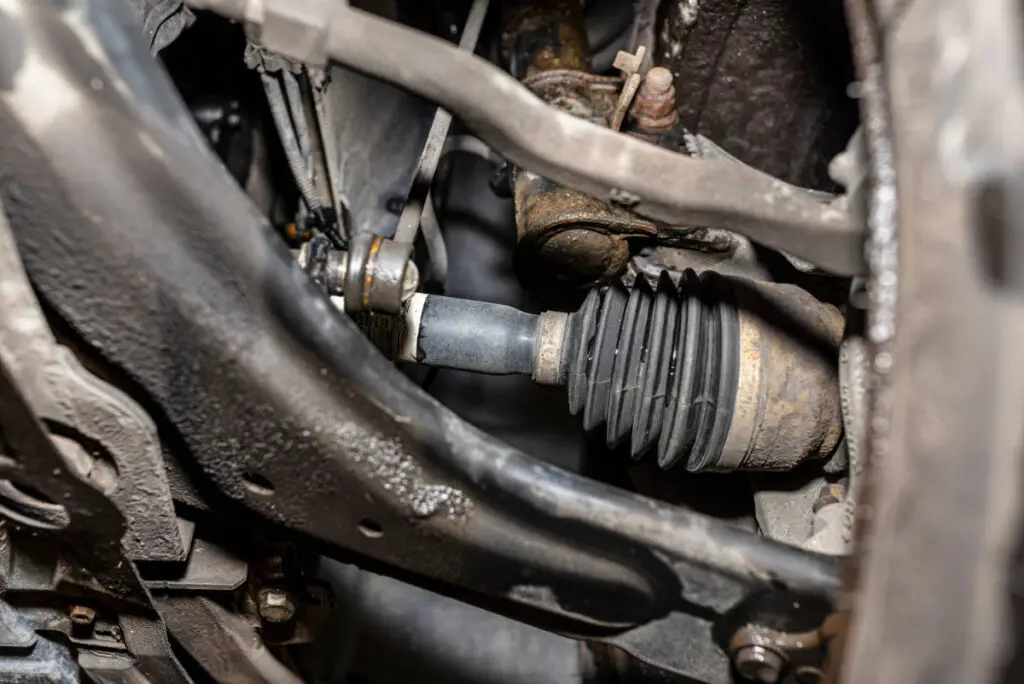Regarding axle ratios, everybody is asking which one is better.
Each of these axle ratios is equal in terms of technicality. Depending on how you want to utilize your car, either of these might be a decent axle ratio.
In this article, find out more about axle ratios and which one might be perfect for you.
Advertising links are marked with *. We receive a small commission on sales, nothing changes for you.
3.33 Vs. 3.55 Axle Ratio – What Is The Difference?

Different advantages are offered to the driver by the 3.31 and 3.55. Depending on what the driver needs, these advantages change. So let’s examine their contrasts in more detail.
Pulling and Towing Abilities
For trucks like the Ford F-150, pulling power is a crucial component. This is so that it can transport cargo through a trailer or in the back of the vehicle.
The pulling power of 3.55 is more significant than 3.31 when comparing axle ratios of 3.31 and 3.55. As a result, it can haul better and carry more oversized loads.
A fully outfitted Ford F-150 with a 3.55 gear ratio can tow up to 13,900 lbs. A 3.31 can tow 12,700 lbs. This is brought on by the 3.55’s increased torque and acceleration.
Many additional elements, though, work in conjunction with the towing power.
The size of the engine is one of them. For hauling, engine size is critical. But the axle ratio is the topic of this debate. And it does affect the capacity to tow.
So 3.55 is the preferred option if you use your vehicle to carry hefty cargo.
Not to add, towing is the primary reason 3.55 is chosen over 3.73. Trucks can carry big loads more effectively with a more excellent axle ratio than with a lower one.
According to several experts in this industry, 3.55 is the best minimum axle ratio for towing weights.
Gas Mileage & Fuel Efficiency
Another aspect many people consider when purchasing a car is its fuel efficiency. Less gasoline is consumed when there is an efficient fuel economy. Additionally, 3.31 has a higher fuel efficiency rating than 3.55 (3.31 vs. 3.55).
Compared to the 3.55, the 3.31 may go 0.5–1.0 more miles per gallon. This is because the driving shaft revolves less for every 3.31 turns of the wheel. Consequently, it uses less gasoline per gallon.
As a result, 3.31 has higher mileage per gallon than 3.55 since it uses less gasoline.
A 0.25 axle ratio variation can increase the F150’s fuel economy by up to 1 mpg. So you’ll get almost 1 mpg more with 3.31 than with 3.55.
3.31 should work well if you prefer towing while conserving money.
Torque
Compared to 3.31, 3.55 offers more torque to the rear wheels.
The most significant twisting force produced by engines is known as torque. Therefore, the engine’s increased torque improves the truck’s overall performance.
The torque that may be sent to the rear wheels is now linked to the axle ratio.
A larger axle ratio allows the engine to provide more torque to the rear wheels. Therefore, it is evident that 3.55 has more torque.
Additionally, increased torque results in higher RPM and more effective load carrying. The increased power sent to the back wheels also facilitates climbing hills.
So, if you primarily hike uphill, stick with 3.55. Not to mention the increased RPM.
Acceleration
Since trucks are typically used to transport goods, acceleration is crucial. For example, the trailer or the rear of your Ford F-150 is loaded with stuff. So it becomes simpler to pull them with increased acceleration.
Additionally, broken or filthy piston heads reduce acceleration. It would help if you thus cleaned the piston heads.
Additionally, a quicker acceleration rate is advantageous for off-road commuting. However, you might need more time to be content with a reduced acceleration on the road with so many potholes and ruts.
3.31 accelerates slower than 3.55. Because 3.55 has more rotations per minute than 3.31, acceleration is more significant in 3.55. Additionally, improved acceleration makes it simpler to tow cargo both in the city and off the beaten path.
Therefore, 3.55 is superior in terms of performance since it has better acceleration.
Verdict: 3.31 Vs. 3.55 Axle Ratio?
Although the 3.31 axle ratio has somewhat better fuel efficiency and the 3.55 axle ratio has slightly better torque delivery; generally, the performance of these two axle ratios is very close.
Consider first what you’ll be using your vehicle for and what kind of equipment it comes with before choosing the optimal axle ratio for your needs.
Frequently Asked Questions
Now let’s review some of the most asked questions about axles 3.31, 3.55, and the axle ratio 3.73.
Is 3.31 Or 3.73 Gears Better?
The vehicle will accelerate more quickly with the higher axle ratio value. For instance, a car with an axle gearing of 3.55:1 will accelerate more rapidly than one with a gearing of 3.31:1. A truck with a 3.73 axle ratio will accelerate more quickly than one with a 3.55 axle ratio.
In the end, it all depends on what you need.
Are 3.31 Gears Good For Towing?
The trailer could be able to be pulled by the 3.31. But since it will tow better and have greater fuel efficiency loaded, you probably want the 3.55 if you tow most of the time.
Is a 3.73 Axle Ratio Good For Towing?
The ideal axle ratio for towing for pickup trucks manufactured after 2010 is between 3.55 and 3.73. V8 gas and diesel engines may accelerate well in this range.
Going with the 4.10 is a no-brainer for hauling super-heavy items. But if you’re not dealing with that heavy weight, you’re better off with the 3.73.
In addition, because the engine has to work less to sustain cruising speeds, the bigger 3.73 gears reduce engine stress.
Is 3.55 Or 3.73 Better?
While 3.73 gears offer superior acceleration and performance, 3.55 gears will give you better gas mileage.
So, the same as we wrote above in the question where we compare the 3.31 and the 3.73, it is all about your needs.

Luna Meschiari is a full-blooded car nut who is well known to local garages, as each article is meticulously researched and peppered with the latest piece of information. Guess what car she’s driving right now? A RAV4 2021 Hybrid. But her heart also sleeps for pickups like the F-150. Get to know Luna better on the about us page.
Advertising links are marked with *. We receive a small commission on sales, nothing changes for you.
